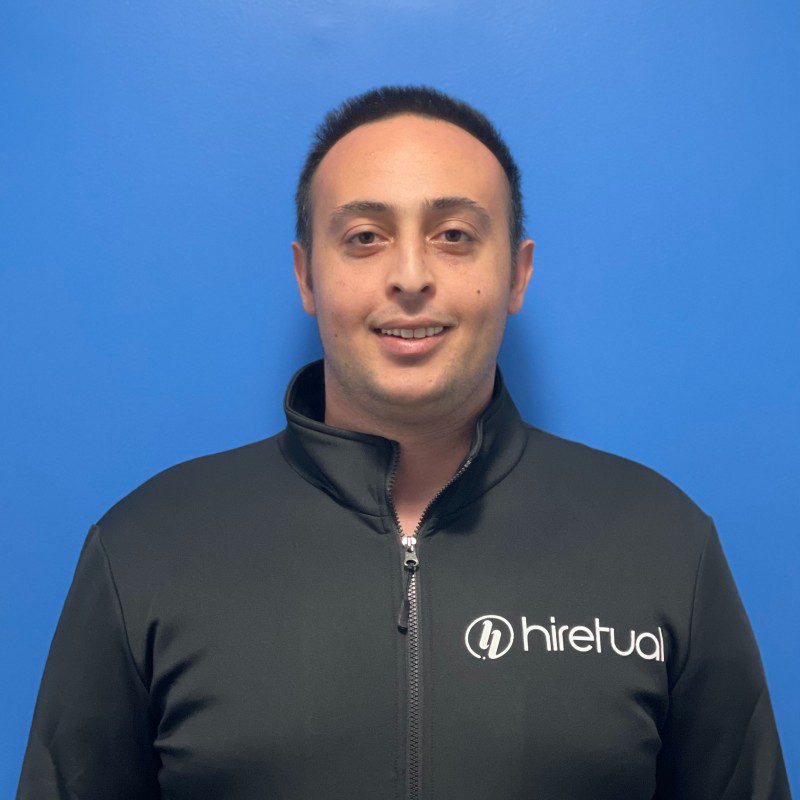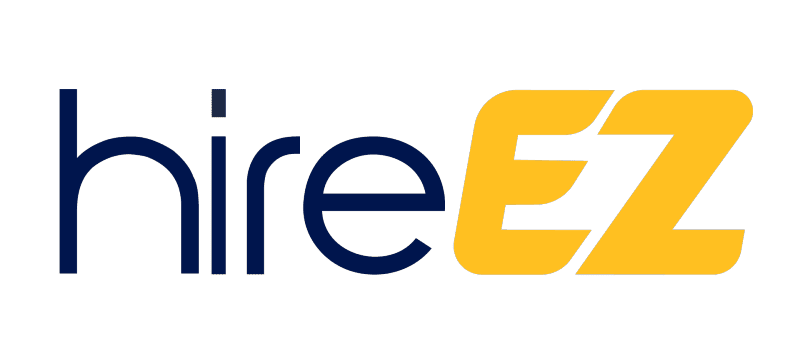From AI to DE&I: Reducing bias to create an inclusive hiring culture
DE&I is no longer a nice-to-have, but a critical must-have for any successful organization.
However, in the bid to drive DE&I at scale, many organizations unwittingly put hiring processes in place that create more problems than they solve, including, restricted talent pools, biased communications, and limited visibility on goal progress.
So how can hiring teams reduce bias (and not just race or ethnicity or gender for example, but by age, disability, affinity, conformity, and more) and create an inclusive culture and hiring process whilst mitigating these potential downfalls?





In this, now-on-demand session with Hiretual and UNLEASH, our senior, pioneering HR practitioner panelists from OLX Group, Wayfair, and Pfizer discuss how they’re transforming efforts around DE&I within their organizations. The conversation covers how organizations can successfully personalize the candidate experience with AI to secure sought-after talent whilst also considering how to strengthen the DE&I journey by mitigating potential pitfalls and unconscious biases. The panel also considers how Talent Acquisition-specific DE&I strategies and tools can map into broader business objectives and wider conversations on this critical topic.
Watch on-demand to:
- Understand how demand has changed for underrepresented talent.
- Learn ways to blend personalization into the hiring process.
- Consider how AI-powered talent sourcing can provide a toolkit for DE&I-focused sourcing, engagement, and analysis.
- Benchmark against experiences of fellow practitioners and garner insights of how to mitigate biases in the hiring process through training, technologies, and additional practical guidance to takeaway.
Bias is not in the AI, it’s in the data
To attract and retain a diverse and inclusive workforce, recruiters need to be able to identify and manage bias among the business’s current employees, organizational stakeholders, and HR teams. Effectively managing the bias that is within your organization is the gateway for success in today’s work landscape. It will ensure maximized revenues and employee satisfaction levels, whilst also shaping a professional environment that supports the growth of talent from all walks of life.
Oana Iordachescu, Head of Technology TA at Wayfair discussed during this webinar session how technology, oftentimes touted as exacerbating bias, can actually be the arbiter. Oana outlined how technology can enable TA leaders to answer, “where are my hires coming from?” and “where do I need to place emphasis and influence, talent pool by talent pool, in order to be more inclusive?”. She clearly considers that technology can enable more accountability within the organization, but is also acutely aware of the need to go through routine due diligence with data sets to iterate and correct biases that may very well lie here. One important takeaway from the session is that TA and DE&I leaders must not take data or technology abilities for granted but continually monitor, question, and interrogate.
Bias is not in the AI, it’s in the data.
Oana Iordachescu, Head of Technology TA – Europe at Wayfair
In a similar vein, Manjuri Sinha, Global Head of Talent Acquisition at OLX Group weighed up that “AI can be like Doctor Jekyll and Mr. Hyde.” She can see that AI offers a lot in the way of augmenting the TA role, but is aware that there is a potential for the data to be skewed and populations within talent pools to be kept out. She insists on technology being interrogated and highlighted questions needing to be asked when considering onboarding new technologies, like, “Has it been tested enough?”, “Who made the tool?”, “What biases might the developers of the tool have and what’s been done to mitigate these?”.
What’s important to consider, and something the folks at Hiretual are keen on advocating is that managing bias is not a destination, it’s a journey. In their eBook, “Managing bias in the recruitment process“, it states that “individuals have to be willing to be introspective and take the time to continuously manage their bias and be willing to search for continued awareness.” In this downloadable guide, they provide a list of ways for recruitment leaders to hold themselves and their teams accountable in the bid for fostering true diverse and inclusive workforces.
DE&I-focused TA in the context of the organization
The greatest challenge for organizations to effectively advance DE&I is the ability to manage bias in recruitment.
During this session, we were lucky enough to be joined by practitioners with differing stakes in the DE&I conversations within their global organizations. Antonio Bebba is the European DE&I Regional Operations Lead at Pfizer and is consumed by the overarching DE&I strategy there. In this session, he spoke to the journey Pfizer has undergone to shift to a mature, inclusive culture, reaching all regional dimensions and the nuances that come with Pfizer’s varying local contexts.
DE&I needs to be embedded in everything we do.
Antonio Bebba, European DE&I Regional Operations Lead at Pfizer
Antonio sees the inclusive hiring culture as a very important part of Pfizer’s bigger DE&I transformation. His mission is focused on educating and training internal employees, including hiring managers and decision-makers, to understand what an inclusive culture means, enabling them to grow as individuals, whilst also increasing underrepresented groups’ participation in the workforce. His top-down approach to DE&I strategies, encompassing Talent Acquisition, speaks heavily to the importance of buy-in from organizational leadership and a big step change that needs to happen around mindset, as organizations consider bettering their DE&I.
Lowering unconscious bias and educating and assisting recruiters to be more intentional in their DE&I efforts was something that Riad El Hout, Enterprise Customer Success Manager at Hiretual, also considered to be gravely important. Whilst Riad’s passion largely sits with the benefits of technology, he too believes that TA leaders cannot solely rely on a tool. He advocates that there also needs to be cultural changes and mindset changes that must happen in parallel for the technology to be effective and make a tangible difference.
A global but local sourcing strategy with technology
In our global world, HR leaders can oftentimes meet a number of roadblocks when trying to instill an all-encompassing, holistic approach. Antonio discussed, in the context of DE&I and TA, there can be constraints as to what information is readily available. For example, the US approach to information and the cultural differences around information shareability and accessibility, in comparison to Europe. These nuances can mean that a global approach to DE&I can be difficult, as recruiters can feel like their hands are tied by not having certain data points measurable and/or accessible.
The panelists all agreed that there needs to be a cultural awareness that needs to flow within an organization, whereby global strategies are layered and translated into local realities. Using AI can enable TA leaders to enact these nuances into their strategies, by understanding what’s available in the local talent pools in terms of information access, as well as what talent is actually available, and how this resonates with global objectives. Riad believes that goals must be set and defined around how inclusion can be created in local contexts, but technology now has the ability to provide insights and connect information on talent outside of the local, to ensure that underrepresented talent is included and supported. Manjuri went on to discuss how in many instances, we are now unrestricted by “city” and the shift to hybrid and flexible ways of working is supporting DE&I efforts greatly.
“Diverse talent might not be local to you, but it can still be accessible.”
Riad El Hout, Enterprise Customer Success Manager at Hiretual
Oana furthered this thinking by outlining the function’s shift from focusing on traditional data points for candidates to the growing interest and efforts to measure competencies and experience. She believes that an inclusive hiring culture will come from shifts like this in Talent Acquisition, as well as broader HR efforts of beginning to understand learning paths and what the business goal is over time to not just hire talent but to develop talent for specific future business needs, as an additional route for growing a healthy workforce and increasing representation. Again, AI and HR tech can be the game-changer here, with the ability to map current failings and opportunities to better DE&I.
Candidate attraction and engagement with DE&I at the center
75% of people currently working at companies where they had a positive candidate experience said that it influenced their decision to accept their offer. Something that came out of the webinar session, was the importance of having openness and critique around DE&I from every candidate touchpoint as a means to enabling a positive candidate experience. A number of panelists raised the need to reflect on career websites, for example, and to consider if the organization is talking about diverse people stories here. Manjuri noted that they use technology to analyze their job descriptions and critique them for bias language as well. Oana noted that Wayfair considers inclusive ways of working by having “Families of Choice” that aims to serve the needs and offer culturally-appropriate reactions to diverse talent communities.
AI-tools like Hireutal‘s can reduce obstacles in the hiring and assessment steps of the Talent Acquisition journey. Whilst avoiding tokenism, appealing to a larger talent segment can be made easier by focusing on certain segments of diversity. AI can help to identify more underrepresented talent by analyzing profiles for pronouns, schools, memberships with diversity organizations more to support this. Additionally, AI-tech can understand how underrepresented talents are reacting to the job market for a particular role or industry with market analytics, as well as identifying weaknesses in your diversity hiring strategy by analyzing how the TA team is interacting with minority groups. Hiretual’s AI can identify engagement drop-offs, response rates and qualification rates to help TA leaders to decide their next strategic move and objectives.
The combination of the abilities and advancements in cutting-edge tech coupled with the timing of the ‘Great Rehire’, gives employers a chance to re-evaluate the way they hire diverse, underrepresented talent – which often leads to better recruitment and retention metrics. It’s not just nice to have any more, but a must-have.
To find out more about hiring underrepresented talent, check out our Hiretual content hub.
